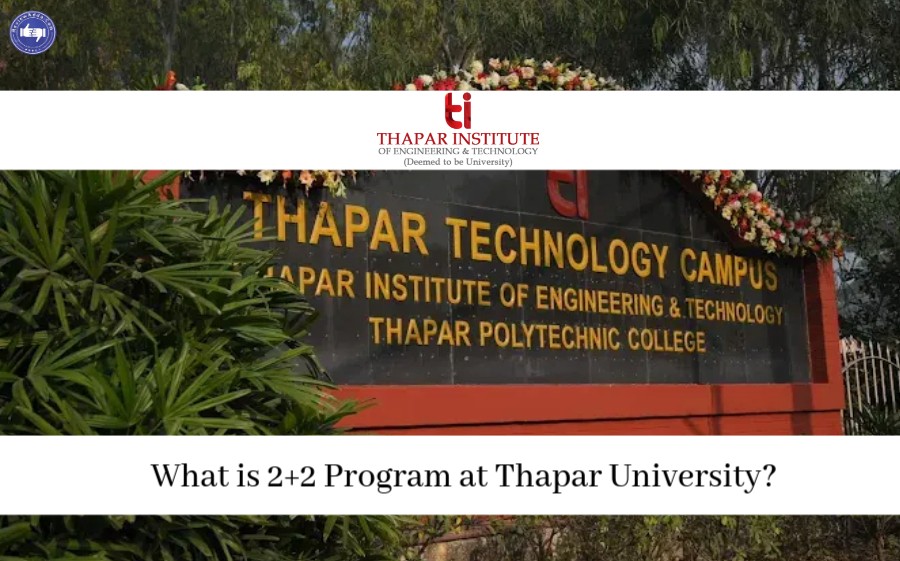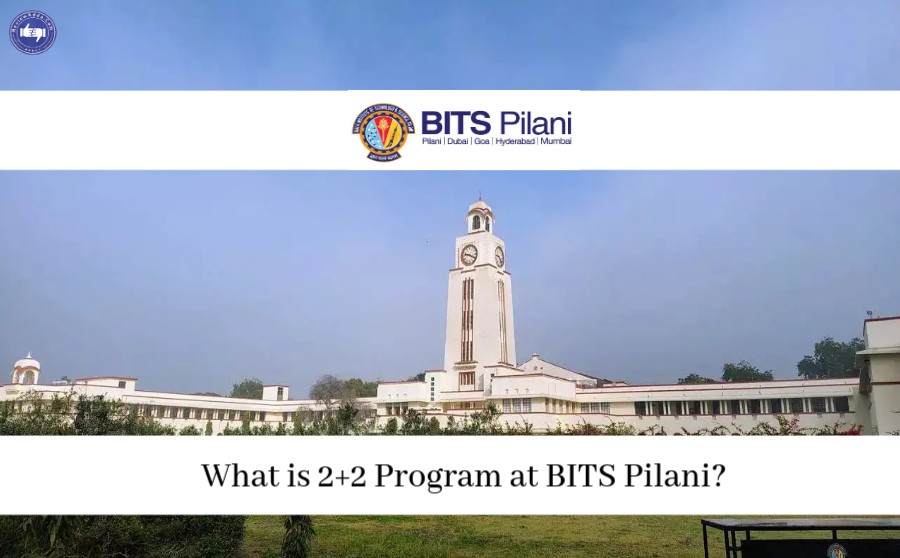Topic We Cover: GRE vs GMAT vs CAT
1. Graduate Research Examination (GRE)
2. GRE Exam Structure and Application Fee
- Analytical Writing Section
- Quantitative Section
- Verbal Section
- Approximate percentile for verbal and quant scores
3. GRE Prep
- GRE Number of applicants and number of attempts
- GRE Test taking format and duration
4. Graduate Management Admission Test (GMAT)
5. GMAT Exam Structure and Application Fee
- Analytical Writing Assessment (AWA)
- Integrated Reasoning
- Quantitative Section
- Verbal Section
6. GMAT number of attempts and number of applicants
7. GMAT Test taking format and duration
8. Common Admission Test (CAT)
- CAT Exam Structure and Application fee
- CAT Number of applicants and number of attempts
- CAT Eligibility criteria
9. GRE vs GMAT vs CAT: Final Summary
GRE, GMAT and CAT are three very popular MBA entrance exams known to aspirants in India and around the world. Each exam has its own nuances and details which is why students tend to differentiate their preparation practices for each of these exams.
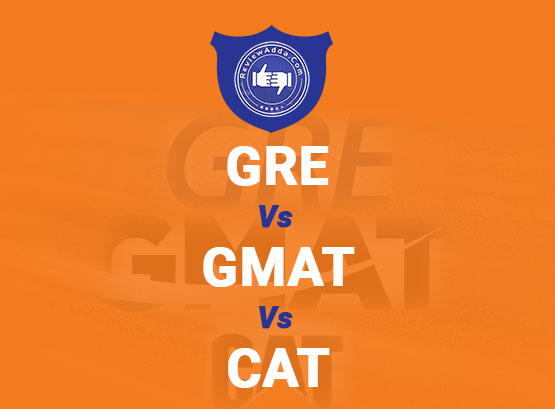
GRE, GMAT and CAT are three of the Biggest MBA Entrance Exams in the world
This article focuses on discussing which exam presents a greater challenge towards students and which the better pathway to a B-school is.
Graduate Research Examination (GRE)
GRE is a curious exam as it is accepted as a standard score for multiple disciplines, suggesting clearly the exam is a very good measure of a graduate’s all-round capabilities.
While most students in India identify GRE as an exam to apply for an MS, most top draw B-schools in the US accept GRE scores as well for MBA admissions. This makes the GRE exam a subject of great scrutiny as it attracts significant proportions of students vying for different postgraduate courses.
GRE Scores are mandatory for practically all graduate schools in the US, especially for admissions to technical courses such as ME and MS.
ETS, the convenor of GRE also offers candidates the option of taking separate GRE Subject Tests. The Subject Test option is an opportunity for candidates to display their prowess in a particular field of study. Most graduate schools however do not ask for separate subject test scores.
GRE Exam Structure and Application Fee
GRE is divided into six sections, namely an analytical writing section, which is timed and scored separately from the rest of the sections. The other sections consist of two verbal and quantitative reasoning segments each and either a research or experimental section. The last section (research or experimental) is not counted in the final test scores. The answers in this section are later used by ETS for setting questions in the future.
The design of GRE is unique in a way not other Indian exams are. The first question a student attempts in the GRE exam is the easiest of the lot. As he/she progresses, the level of questions only increases if the student is able to answer the previously asked question correctly. This means progressing to a higher level is only possible after clearing an easier question.
This methodology is very different from the usual entrance exams held in India where questions of varying difficulty can appear out of nowhere. However, this methodology has also been criticized by many in the States, who believe the difficulty of questions is a subjective matter and cannot be generalized. The criticism is fair, considering question difficulty is also at times rooted in a student’s perceptibility.
For instance, a student doing well on a GRE suddenly comes across a question he finds easy. It may be a difficult question according the examiner, but the student might find it easy. On seeing an easy question, the student will be forced to consider whether he has been answering the previous questions incorrectly. Thus, rather than being a simple test, GRE can become a game of psychological warfare between the examiner and the examinee.
The GRE application fee charged during registration is $205/-
Analytical Writing Section
The writing section consists of two sub-sections, the issue task and argument task.
The issue task prompts the candidate to write an essay on a selected topic in 30 minutes. The essay has to be typed on the computer on a word processing document provided by ETS. Features such as word counter and spell or grammar checker are not available, so candidates have to rely on their own prowess in English to attempt this section successfully.
The argument task contains a given set of facts and assertions which lead towards a conclusion. The job of the candidate is to make an argument which critiques the given conclusion. Like the issue task, the examinee is expected to present his argument by typing it on the word processor provided by ETS.
This section is graded on scale of 0-6 with half-point incremental point parameter.
Quantitative Section
The quantitative section is scored from 130-170 on an incremental scale of one. No candidate can score below 130. Typically, each quant section consists of 20 questions which have to be finished within 35 minutes. The level of the questions is high school mathematics to accommodate students from vocational backgrounds.
Verbal Section
The verbal section is also scored between 130 and 170 on an incremental scale of one, just like the quantitative section. Each verbal section has 20 questions which have to be answered within 30 minutes. The level of questions here is again high school level.
Approximate percentile for verbal and quant scores
|
Scaled Score |
Verbal percentile |
Quantitative percentile |
|
170 |
99 |
98 |
|
165 |
95 |
90 |
|
160 |
84 |
78 |
|
155 |
67 |
60 |
|
150 |
45 |
40 |
|
145 |
25 |
21 |
|
140 |
10 |
8 |
|
135 |
2 |
1 |
|
130 |
<1 |
<1 |
GRE Prep
ETS offers a preparation software going by ‘PowerPrep’, which practise paper of retired (previous year) questions. Besides official prep tools offered by ETS, there are many other dedicated GRE prep institutes which offer specialized courses in various forms, such as online, classroom and 1-on-1 sessions.
While some claim there is no need for special GRE prep classes, the high level of competition for the top universities in the US and around the world prompts many students to undergo special training for the exam.
GRE Number of applicants and number of attempts
An estimated 6 lakh students sit for GRE exam around the world appear for GRE every year. This figure is very low compared to number of applicants for major Indian B-school exams such as XAT and CAT which see over a million applicants every year.
A candidate can appear for GRE for a maximum of five times in a calendar year. There needs to be a gap of atleast 21 days between each attempt. Even a student cancels his/her respective GRE score, it will still be counted as a single attempt in the overall tally.
The GRE score validity also varies from college to college. Some B-schools accept a GRE scores which are at the most five years old, while some have no particular time-frame for accepting scores.
GRE Test taking format and duration
While the computer-based online exam is more popular, ETS also provides the option to candidates of giving GRE in a pen-paper based format.
The duration of the GRE exam is approximately 3 hours and 45 minutes which also includes one minute breaks between each section and a ten minute break after the third section.
Graduate Management Admission Test (GMAT)
If GRE is enough for B-school admissions, what is the point of GMAT?
GMAT remains the former and current standard for B-school admissions to foreign universities, more specifically the ones in the US. More than 2100 universities across the world accept GMAT scores for admission to primarily business and management-centric courses.
GRE only became acceptable to most B-schools until a few years back while GMAT for long has been the keystone exam for most MBA aspirants. Conducted by the Graduate Management Admission Council (GMAC), GMAT shares a lot of similarities with GRE. Let us first analyze some key details about the GMAT exam.
GMAT Exam Structure and Application Fee
The GMAT exam comprises of four sections; analytical writing assessment (AWA), integrated reasoning (IR), quantitative section and verbal section. From the naming of the sections itself, we can begin to see the similarities between GRE and GMAT.
According to most test-takers, GMAT is tougher than GRE especially coming to sections like verbal and quantitative. However, since the number of GMAT takers is significantly less than GRE applicants, many candidates actually prefer giving GMAT.
Like GRE, GMAT also has a similar scoring methodology wherein questions are segregated according to their respective difficulty. If a student is able to solve a question of a certain difficulty level, the next question will automatically be one of increased difficulty. This also plays a key part in building the final score of the candidate, as the difficulty of the final question answered by a candidate gives a sense of what his/her score might be.
However, the overall scoring methodology is much more complex than simply evaluating the difficulty of the last question answered. The final scaled GMAT score is predicated on the following factors:
- Number of questions attempted
- Number of questions answered correctly
- The difficulty level of the questions answered
The first question which appears during a GMAT test is of a mid-range difficulty. If a student answers correctly, his/her score climbs higher, otherwise it comes down. Thus, it is very difficult to get a very low score in GMAT as the starting point itself is from a mid-range difficulty section.
A key point to remember is that a GMAT test taker should try to start the exam very well. The impact of answering the first few questions correctly is much more compared to answering the last question correctly.
For instance, if someone answers the 30th question correctly, the impact of that correct answer isn’t as high because the scoring algorithm has already evaluated the given candidate in the previous 29 questions.
Thus, it is more important to attempt the first few questions well.
Let us now analyze each section:
Analytical Writing Assessment (AWA)
Much like the analytical writing section in GRE, the AWA in GMAT lays emphasis on the ability of a candidate to present a cohesive essay critiquing a given argument. The argument can be anything from a social to financial issue.
This section requires the candidates to use key analytical points to present a well defined critique of a given argument with a strong founding rationale.
The essay in AWA is graded on a scale of 0-6, 6 being the best score possible. The score in AWA does not have any bearing on a candidate’s final GMAT score.
Integrated Reasoning
The IR section was introduced in GMAT in 2012 to measure a candidate’s ability to analyze and give conclusions based on a given set of data. Though the IR score has no bearing on a candidate’s final GMAT score, a good performance in this section is a strong indicator of the examinee’s aptitude in management and business studies.
This section consists of 12 questions based on four different data representations: graphics interpretation, two-part analysis, table analysis, and multi-source reasoning. Scoring is done on a scale of 1-8, 8 being the highest score.
 Get Updated Review ( Voice Based Alumni Feeback)
Get Updated Review ( Voice Based Alumni Feeback)
-
 Check Review (Alumni Feedback) - Lovely Professional University - [LPU] – Click Here
Check Review (Alumni Feedback) - Lovely Professional University - [LPU] – Click Here -
 Check Review (Alumni Feedback) - Amity University – Click Here
Check Review (Alumni Feedback) - Amity University – Click Here -
 Check Review (Alumni Feedback) - DIT University Dehradoon – Click Here
Check Review (Alumni Feedback) - DIT University Dehradoon – Click Here -
 Check Review (Alumni Feedback) - Chitkara University – Click Here
Check Review (Alumni Feedback) - Chitkara University – Click Here -
 Check Review (Alumni Feedback) - Ansal University – Click Here
Check Review (Alumni Feedback) - Ansal University – Click Here
Quantitative Section
The quantitative section is often touted to be the toughest section of the exam. There is no set number of questions in this section, as the score varies from 0-60. However, it is very difficult to score either more than 51 or less than 6 in this section due to the structure of the exam pattern algorithm as discussed before.
| Quantitative Score | Percentile |
| 51 | 97 |
| 50 | 87 |
| 49 | 77 |
| 48 | 71 |
| 46 | 62 |
| 43 | 52 |
| 40 | 43 |
| 36 | 33 |
| 31 | 21 |
| 25 | 12 |
| 6 |
<1 |
Verbal Section
The verbal section is also scored between 0-60 and comprises of the following question types, namely reading comprehension, critical reasoning, and sentence correction. In the verbal sections scores below 9 and above 44 are rare.
According to the examiners (GMAC), the verbal section in GMAT aims to assess a candidate’s reasoning, analytical and communication skills.
|
Quantitative Score |
Percentile |
|
45-51 |
99 |
|
44 |
98 |
|
40 |
91 |
|
36 |
81 |
|
34 |
72 |
|
31 |
62 |
|
28 |
52 |
|
25 |
40 |
|
22 |
31 |
|
19 |
20 |
|
15 |
10 |
|
6 |
<1 |
The final GMAT scaled score vs percentile analysis is given in the image below:
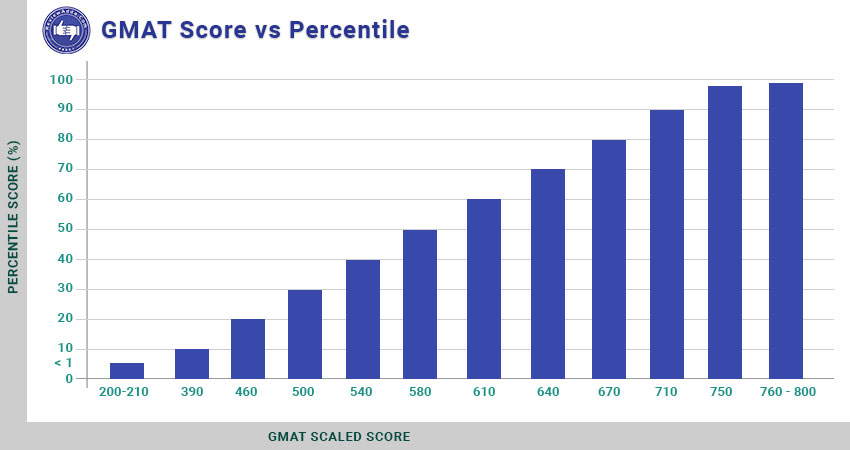
If a candidate scores 800 in GMAT, he/she will be allowed to retake the exam only after five years
The GMAT exam fee is $250/-
GMAT number of attempts and number of applicants
A given test taker can give the GMAT exam five times in one calendar year, with a gap of atleast 16 days between each attempt. Like GRE, even a cancelled score is counted as an attempt.
The number of applicants giving the GMAT each year on an average is around 2.61 lakhs.
GMAT Test taking format and duration
The GMAT exam is only conducted in online computer-based mode which draws a stark contrast to GRE which also offers the option of writing the exam in a paper based format.
The exam is 3.5 hours long, but candidates should prepare for a four hour exercise including the breaks involved in between.
Common Admission Test (CAT)
The Common Admission Test (CAT) is an exam conducted by the Indian Institutes of Management (IIMs).
For Indian MBA aspirants, the CAT exam is surely one of the most recognizable management entrance exams. The exam is conducted as a provisional admission test to the IIMs and various other B-schools in India which accept CAT scores.
The CAT exam is convened every year by a given IIM which usually changes on an annual basis. The exam is conducted only once a year, which is at odds with GRE and GMAT which can be attempted multiple times throughout the year.
Like most standardized Indian exams, CAT has a very low final selection percentage of 1%. To put this into context, the selection percentage of GMAT is 10% and it is literally the gateway to the best B-schools in the world.
The reason behind the inverted selection ratio of CAT is the heavy competition for a handful of IIM institutes. Out of the 20 IIMs currently operational, only 5 are considered as elite institutions. The rest are usually at the lower spectrum of Tier 1 MBA colleges.
CAT Exam Structure and Application fee
The CAT exam pattern is notorious for leaving students in a tizzy by making unexpected changes to the exam format every year. This is again a major reason behind the difficulty of the CAT exam.
The exam itself is conducted only in online mode. There is no underlying algorithm which presents the questions in a particular order as is incorporated in GMAT and GRE. Thus, each upcoming question can be of any probable difficulty level, from very easy to very hard.
There are a total of three sections in a given CAT exam. They are given as follows:
- Verbal and Reading Comprehension (VARC)
- Data Interpretation & Logical Reasoning (DI & LR)
- Quantitative Ability (QA)
The QA and VARC sections consist of 34 questions each while the DI & LR sections consist of 32 questions. This distribution was applicable for CAT 2017. Things could be different for this year’s CAT as there is no set pattern for the exam.
Each question carries 3 marks and a wrong answer is liable for penalty of -1.
The CAT exam application fee is Rs. 1800/-
CAT Number of applicants and number of attempts
A total of 2.31 lakh students applied for CAT 2017. When put against the total number of seats for these students at the 20 IIMs across India, the success ratio comes at a lowly ≈ 1%.
A given student can apply for CAT any given number of times. However, since the exam is conducted on an annual basis, the actual number of attempts a candidate usually makes is somewhere around 2 or 3
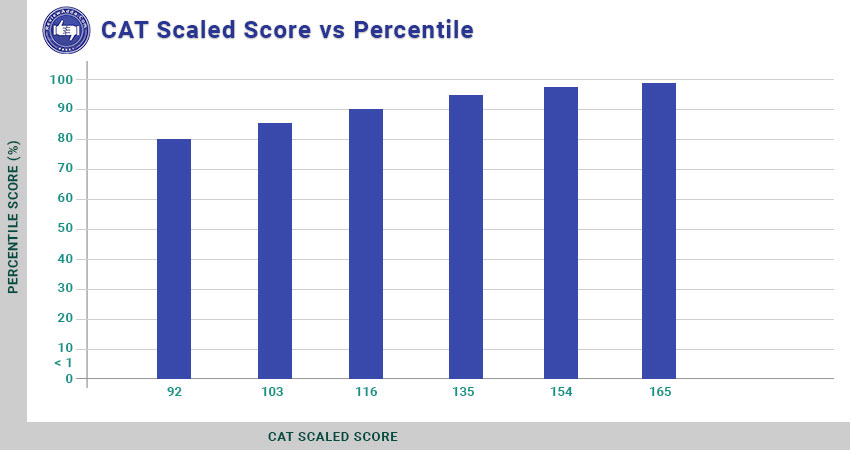
CAT Score v percentile analysis has been done in the image above
CAT Eligibility criteria
The CAT exam imposes some strict guidelines on who is allowed to give the test in the first place. Some of those details have been given below.
- Should be a graduate from a recognized institution with atleast 50% in graduation (or CGPA)
- The duration of graduation degree should be atleast 3 years
- Students in the final year of their degree can also apply provided they obtain an NOC from their respective institution
A key point to remember about the IIMs is that they do not provide MBA courses in reality. Since the IIMs are not affiliated to any university, they cannot offer an MBA course under the guidelines set by the UGC.
The course offered instead is a Post Graduate Diploma in Management (PGDM). A PGDM from an IIM is no way any less than an MBA degree offered at some other MBA college in the country. In fact, most students, teachers and recruiters prefer PGDM courses over MBA because of the former’s inclination towards industry-oriented learning.
Since MBA is a term popularized globally, many often fail to make the distinction between PGDM and MBA.
GRE vs GMAT vs CAT: Final Summary
We finally conclude with the final table of comparison between the discussed exams; GMAT, GRE and CAT. The factors chosen clearly define some key diverging areas between the three exams.
|
Factor |
GRE |
GMAT |
CAT |
|
Conducting Body |
ETS |
GMAC |
IIMs |
|
Exam fee |
$205/- |
$250/- |
Rs. 1800/- |
|
Number of attempts |
Five in one year |
Five in one year |
Once a year |
|
Exam date |
Conducted throughout the year |
Conducted throughout the year |
Conducted usually in the month of November |
|
Success percentage |
10% |
10% |
1% |
|
Format |
Computer and paper based |
Only computer based |
Only computer based |
|
Maximum marks |
340 |
800 |
Pattern changes regularly |
|
Number of applicants |
≈6 lakhs |
≈2.61 lakhs |
≈2.31 lakhs |
|
Eligibility criteria |
No specific eligibility criteria |
No specific eligibility criteria |
Should be a graduate or in final year of graduation |
|
Applicability |
Most top B-schools in the US |
Most top B-schools in the US |
IIMs and other MBA colleges in India |
|
Target course |
A number of courses such as MS, Law, MBA and many others |
Only management and business related courses |
Only management and business related courses |
|
Validity |
5 years |
5 years |
1 year |
|
Duration |
3 hours 45 minutes |
3 hours 30 minutes |
3 hours |
|
Difficulty (out of 10) |
7 |
8.5 |
9 |



